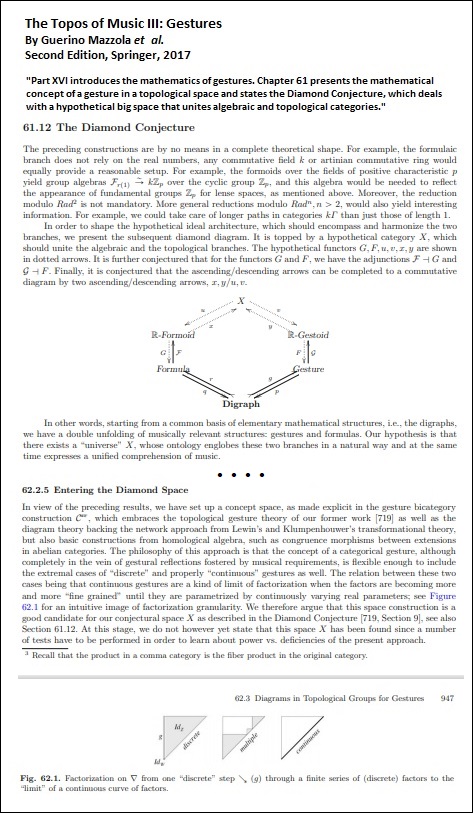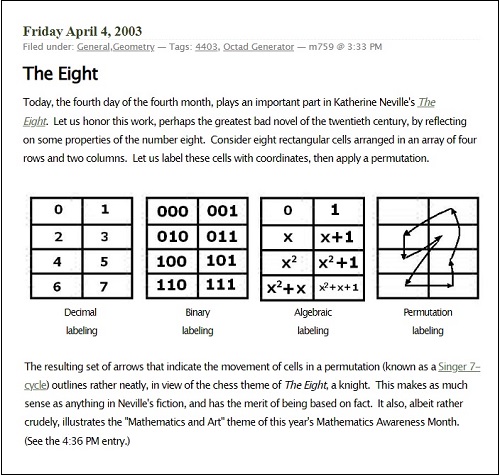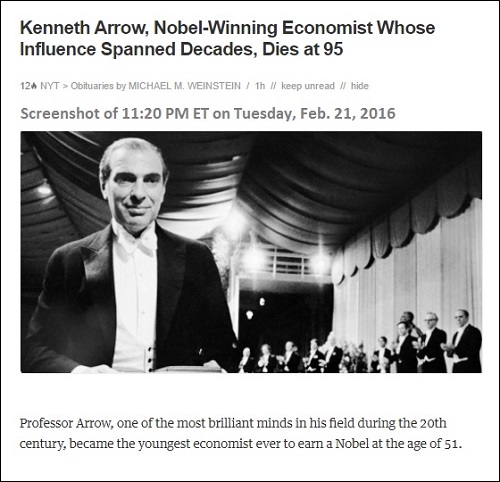The opening of the new Netflix film FUBAR suggests a review . . .
Thursday, June 1, 2023
Antwerp Revisited: Diamond Space
Friday, January 13, 2023
Thursday, January 12, 2023
Mazzola’s Music-Theory “Diamond Space”

See also earlier references to Mazzola in this journal.
Thursday, March 27, 2014
Diamond Space
Definition: A diamond space — informal phrase denoting
a subspace of AG(6, 2), the six-dimensional affine space
over the two-element Galois field.
The reason for the name:
Click to enlarge.
Tuesday, December 3, 2013
Diamond Space
A new website illustrates its URL.
See DiamondSpace.net.
Monday, January 29, 2024
Self as Imago Dei: Hofstadter vs. Valéry
|
Google search result: Saint Anselm College https://www.anselm.edu › Documents › Brown by M Brown · 2014 · Cited by 14 — Thomas insists that the image of God exists most perfectly in the acts of the soul, for the soul is that which is most perfect in us and so best images God, and … 11 pages |
For a Douglas Hofstadter version of the Imago Dei , see the
"Gödel, Escher, Bach" illustration in the Jan. 15 screenshot below —
Tuesday, June 15, 2010
|
Tuesday, March 28, 2017
Bit by Bit
From Log24, "Cube Bricks 1984" —
Also on March 9, 2017 —
For those who prefer graphic art —
Tuesday, February 21, 2017
Tuesday, June 14, 2016
Model Kit
The title refers to the previous post, which quotes a
remark by a poetry critic in the current New Yorker .
Scholia —
From the post Structure and Sense of June 6, 2016 —
Structure
Sense
From the post Design Cube of July 23, 2015 —
Thursday, October 1, 2015
Another Bad Song for Dave Barry
"All work and no play…."
— Stanley Kubrick's film (1980) of The Shining (1977)
"Each metaphor already modeled the modeler
that pasted it together. It seemed I might have
another fiction in me after all."
— Richard Powers, Galatea 2.2 (1995)
"In the space between what happens
And what gets left behind…."
— "Diamond Space" (2006), song by
Michael Friedman and Sam Masich
Combining, as in a headline from today's Harvard Crimson ,
"programs and public space," we have …
Thursday, July 23, 2015
Monday, June 1, 2015
Excited about Space
Background — A search for the title in this journal.
Grothendieck was at times excited about space:
"The notion of space is certainly one of the oldest
in mathematics. It is fundamental to our 'geometric'
perspective on the world, and has been so tacitly
for over two millenia. It's only over the course of the
19th century that this concept has, bit-by-bit, freed
itself from the tyranny of our immediate perceptions
(that is, one and the same as the 'space' that
surrounds us), and of its traditional theoretical
treatment (Euclidean), to attain to its present
dynamism and autonomy. In our own times it has
joined the ranks of those notions that are most freely
and universally employed in mathematics, and is
familiar, I would say, to every mathematician
without exception. It has become a concept of multiple
and varied aspects, of hundreds of thousands of faces…."
— fermentmagazine.org/rands/promenade12.html
An aspect not so familiar: Diamond Space.
Friday, May 9, 2014
Models of Everything
“The About page contains detailed descriptions of the project….”
— The Illustris project on constructing a model of the universe
For the mathematics of a simpler traditional Chinese model
of everything, see
- Geometry of the I Ching ,
- Solomon’s Cube, and the
- Diamond Space about page.
Friday, March 28, 2014
Chinese Rune
"The Geometry of the I Ching introduces something called the Cullinane sequence
for the hexagrams, and uses a notation based on the four sides and two diagonals
in a square to indicate the yin and yang lines. The resulting rune-like symbols
are intriguing…."
— Andreas Schöter's I Ching home page
Actually, the geometry is a bit deeper than the rune-like symbols.
" 'Harriet Burden has been really great to me,'
Rune says in an interview, 'not only as a collector
of my work but as a true supporter. And I think of her
as a muse for the project … ' "
— In The Blazing World , the artist known as Rune
Thursday, March 27, 2014
Symbol Game
The following is from a web page by
Andreas Schöter, developer of The Symbol Game.
Building the Narrative
The game can simply be played as a competitive board game,
simply trying to accumulate the most points. However,
to play this way is to miss the main purpose of the Symbol Game.
The author’s page on the game itself —
(This post was suggested by this afternoon’s post Diamond Space.)
Wednesday, January 8, 2014
Occupy Space
Three Notes on Design
1. From the Museum of Modern Art today—
“It’s a very nice gesture of a kind of new ethos:
To make publicly accessible, unticketed space
that is attractive and has cultural programming,”
Glenn D. Lowry, MoMA’s director, said.
2. From The New York Times today—
3. From myself last December—
Wednesday, December 18, 2013
Bing Bang Theory
Microsoft in 2009 on its new search engine name—
"We like Bing because it sounds off in our heads
when we think about that moment of discovery
and decision making— when you resolve those
important tasks."
A search on Bing today —
A colorful tale —
Thursday, December 12, 2013
Outsider Art
"… Galois was a mathematical outsider…."
— Tony Mann, "head of the department of mathematical sciences,
University of Greenwich, and president, British Society for the
History of Mathematics," in a May 6, 2010, review of Duel at Dawn
in Times Higher Education.
Related art:
(Click for a larger image.)
For a less outside version of the central image
above, see Kunstkritikk on Oct. 15, 2013.
Wednesday, October 16, 2013
Theme and Variations
Josefine Lyche’s large wall version of the twenty-four 2×2 variations
above was apparently offered for sale today in Norway —
Click image for more details and click here for a translation.
Wednesday, June 16, 2010
Geometry of Language
(Continued from April 23, 2009, and February 13, 2010.)
Paul Valéry as quoted in yesterday’s post:
“The S[elf] is invariant, origin, locus or field, it’s a functional property of consciousness” (Cahiers, 15:170 [2: 315])
The geometric example discussed here yesterday as a Self symbol may seem too small to be really impressive. Here is a larger example from the Chinese, rather than European, tradition. It may be regarded as a way of representing the Galois field GF(64). (“Field” is a rather ambiguous term; here it does not, of course, mean what it did in the Valéry quotation.)
From Geometry of the I Ching—

The above 64 hexagrams may also be regarded as
the finite affine space AG(6,2)— a larger version
of the finite affine space AG(4,2) in yesterday’s post.
That smaller space has a group of 322,560 symmetries.
The larger hexagram space has a group of
1,290,157,424,640 affine symmetries.
From a paper on GL(6,2), the symmetry group
of the corresponding projective space PG(5,2),*
which has 1/64 as many symmetries—
For some narrative in the European tradition
related to this geometry, see Solomon’s Cube.
* Update of July 29, 2011: The “PG(5,2)” above is a correction from an earlier error.
Tuesday, June 15, 2010
Imago, Imago, Imago
Recommended— an online book—
Flight from Eden: The Origins of Modern Literary Criticism and Theory,
by Steven Cassedy, U. of California Press, 1990.
See in particular
Valéry and the Discourse On His Method.
Pages 156-157—
Valéry saw the mind as essentially a relational system whose operation he attempted to describe in the language of group mathematics. "Every act of understanding is based on a group," he says (C, 1:331). "My specialty—reducing everything to the study of a system closed on itself and finite" (C, 19: 645). The transformation model came into play, too. At each moment of mental life the mind is like a group, or relational system, but since mental life is continuous over time, one "group" undergoes a "transformation" and becomes a different group in the next moment. If the mind is constantly being transformed, how do we account for the continuity of the self? Simple; by invoking the notion of the invariant. And so we find passages like this one: "The S[elf] is invariant, origin, locus or field, it's a functional property of consciousness" (C, 15:170 [2: 315]). Just as in transformational geometry, something remains fixed in all the projective transformations of the mind's momentary systems, and that something is the Self (le Moi, or just M, as Valéry notates it so that it will look like an algebraic variable). Transformation theory is all over the place. "Mathematical science . . . reduced to algebra, that is, to the analysis of the transformations of a purely differential being made up of homogeneous elements, is the most faithful document of the properties of grouping, disjunction, and variation in the mind" (O, 1:36). "Psychology is a theory of transformations, we just need to isolate the invariants and the groups" (C, 1:915). "Man is a system that transforms itself" (C, 2:896).
O Paul Valéry, Oeuvres (Paris: Pléiade, 1957-60)
C Valéry, Cahiers, 29 vols. (Paris: Centre National de le Recherche Scientifique, 1957-61)
Compare Jung's image in Aion of the Self as a four-diamond figure:

and Cullinane's purely geometric four-diamond figure:

For a natural group of 322,560 transformations acting on the latter figure, see the diamond theorem.
What remains fixed (globally, not pointwise) under these transformations is the system of points and hyperplanes from the diamond theorem. This system was depicted by artist Josefine Lyche in her installation "Theme and Variations" in Oslo in 2009. Lyche titled this part of her installation "The Smallest Perfect Universe," a phrase used earlier by Burkard Polster to describe the projective 3-space PG(3,2) that contains these points (at right below) and hyperplanes (at left below).
Although the system of points (at right above) and hyperplanes (at left above) exemplifies Valéry's notion of invariant, it seems unlikely to be the sort of thing he had in mind as an image of the Self.

























